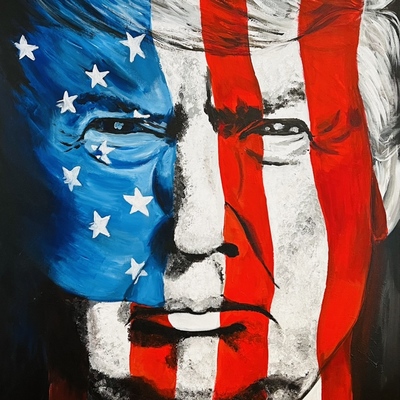
White House Digital Asset Strategy: Bitcoin Reserve Promise Meets Bureaucratic Reality
White House Digital Asset Strategy: Bitcoin Reserve Promise Meets Bureaucratic Reality
Policy Ambitions Collide With Implementation Hurdles as Markets Recalibrate Expectations
Six months after President Trump's executive order promised a Strategic Bitcoin Reserve, the White House delivered a comprehensive digital asset roadmap that stops short of the concrete details markets had anticipated. The roadmap outlines sweeping regulatory reforms and innovation initiatives while conspicuously sidestepping the operational specifics of the government's planned Bitcoin accumulation strategy.
The document, produced by the President's Working Group on Digital Asset Markets established under Executive Order 14178, represents the culmination of extensive federal agency collaboration. Led by White House Cryptocurrency and AI Director David Sacks and Executive Director Bo Hines, the working group's comprehensive regulatory roadmap notably omits specific details about the Strategic Bitcoin Reserve—providing no timelines, funding mechanisms, or acquisition targets that traders and institutional investors had eagerly awaited.

When Federal Agencies Meet Digital Asset Custody
The absence of Bitcoin reserve specifics reflects deeper institutional challenges that extend far beyond policy enthusiasm. Creating a federal cryptocurrency reserve requires harmonizing asset custodianship protocols across multiple agencies—a task complicated by the current lack of established federal guidelines for digital asset management.
The Strategic Bitcoin Reserve concept hinges on aggregating forfeited cryptocurrency from law enforcement and Treasury seizures, necessitating new legal frameworks for custody transfers and secure cold storage implementation. Rather than risk operational vulnerabilities through premature policy setting, the working group opted to defer detailed recommendations to future interagency rulemaking processes.
Congressional appropriations present an equally formidable obstacle. While the executive order authorized the reserve's creation, it deliberately avoided allocating fresh taxpayer funds for active Bitcoin purchases, instead directing agencies to explore "taxpayer-neutral" funding strategies. Without explicit legislative authority or budget allocation for new acquisitions, Treasury officials remain constrained to consolidating existing forfeitures—a limitation that has forced the administration to postpone unveiling concrete acquisition plans until securing congressional collaboration.
Market Sentiment Shifts as Reality Sets In
Bitcoin's modest pullback following the report's release underscores the cryptocurrency market's acute sensitivity to policy signals, particularly when trading near historical highs. The document's regulatory framework proposals—including unified federal licensing and sandbox initiatives—generated immediate optimism among stablecoin issuers and decentralized finance platforms, sectors poised to benefit from clearer operational guidelines.
However, the reserve plan's vague implementation timeline has introduced fresh uncertainty among institutional players. Hedge funds and corporate treasuries, many of whom had positioned portfolios in anticipation of government demand, now face recalibrated expectations around federal Bitcoin accumulation. Some market observers suggest this policy uncertainty could delay the next wave of institutional adoption until Treasury provides more definitive guidance.
The report's advocacy for regulatory sandboxes and streamlined licensing frameworks represents a tangible near-term catalyst for blockchain innovation. The working group specifically recommends that the SEC and CFTC use existing authorities to enable federal-level digital asset trading immediately, providing clarity on registration, custody, trading, and recordkeeping requirements. By reducing jurisdictional overlap and allowing innovative financial products to reach consumers without bureaucratic delays, these measures could accelerate the development of novel DeFi products under clearer regulatory guardrails.
Banking sector modernization features prominently in the recommendations, with regulators directed to clarify permissible bank activities in custody, tokenization, and stablecoin issuance. The working group emphasizes ensuring bank capital rules align with actual digital asset risks rather than penalizing institutions simply for blockchain involvement.
Geopolitical Chess Moves in Digital Finance
The administration's strategic rejection of a central bank digital currency in favor of private-sector stablecoins positions the United States in direct competition with China's digital yuan initiative. This market-driven approach, reinforced by President Trump's July 18 signing of the GENIUS Act—creating the first federal regulatory framework for stablecoins—strengthens dollar dominance in global digital finance while preserving the openness that has historically attracted international capital to U.S. markets.
The working group's recommendations build on recent legislative momentum, including the bipartisan House passage of the CLARITY Act, which would grant the CFTC authority over spot markets for non-security digital assets. Additionally, the administration's termination of "Operation Choke Point 2.0"—regulatory efforts that denied banking services to the digital assets industry—signals a fundamental shift toward crypto-friendly banking policies.
Yet this positioning carries inherent risks. The working group recommends Congress pass the Anti-CBDC Surveillance State Act to codify the executive order's ban on central bank digital currencies, reinforcing the administration's commitment to private-sector solutions. However, without a robust federal reserve mechanism or expedited implementation of innovation initiatives, the United States could cede standard-setting authority to jurisdictions advancing comprehensive digital asset frameworks. The European Union's Markets in Crypto-Assets regulation and China's expanding digital yuan deployment represent competing models that could fragment global standards if U.S. leadership falters.
The establishment of a permanent interagency working group institutionalizes cryptocurrency policy coordination, reducing the likelihood of abrupt regulatory reversals with future administrations. This continuity mechanism addresses a longstanding concern among institutional investors about policy consistency across electoral cycles.
Investment Landscape Reshapes Around Policy Realities
The current market environment presents distinct opportunities across cryptocurrency subsectors. Stablecoin issuers face particularly favorable prospects as the report's endorsement of dollar-denominated private currencies aligns with regulatory trends favoring compliant digital payment solutions. Established players with existing Treasury relationships may capture disproportionate benefits from streamlined licensing frameworks.
DeFi platforms operating within regulatory guidelines could experience accelerated growth as sandbox initiatives reduce compliance friction. However, projects lacking clear regulatory pathways may face continued uncertainty until Treasury clarifies implementation standards.
Traditional financial institutions exploring blockchain integration should monitor the Treasury's anticipated implementation roadmap closely. The report's emphasis on institutional continuity suggests regulatory stability that could support long-term blockchain adoption strategies, particularly in trade finance and cross-border payments where efficiency gains are most pronounced.
Bitcoin's medium-term trajectory remains closely tied to federal reserve implementation progress. While the absence of immediate acquisition announcements has tempered short-term price momentum, successful reserve establishment could catalyze sovereign adoption trends globally, potentially supporting sustained price appreciation over 12-18 month horizons.
The Path Forward: Timelines and Strategic Implications
Treasury's expected publication of a detailed implementation roadmap within 60 days will likely provide the operational clarity markets have sought. Potential funding models under consideration include leveraging forfeiture proceeds and structured buyback mechanisms designed to maintain fiscal neutrality while building reserve positions.
Legislative momentum around Senator Lummis's Strategic Bitcoin Reserve bill suggests Congress could formalize appropriation authority by early 2026, enabling phased purchasing strategies over subsequent months. If executed on schedule, the United States would establish precedent for major federal digital asset adoption, potentially encouraging similar initiatives among allied nations.
Conversely, continued implementation delays risk undermining U.S. leadership in global digital finance standards. Jurisdictions advancing central bank digital currencies or comprehensive regulatory frameworks ahead of American initiatives could capture first-mover advantages in setting technical and operational norms for international digital transactions.
The next 60 days will prove crucial in determining whether the Strategic Bitcoin Reserve transitions from symbolic policy gesture to operational reality. For professional traders and institutional investors, Treasury's forthcoming guidance will likely serve as the definitive catalyst for positioning decisions across cryptocurrency markets.
This analysis is based on publicly available information and established market patterns. Past performance does not guarantee future results. Investors should consult qualified financial advisors before making investment decisions in volatile digital asset markets.